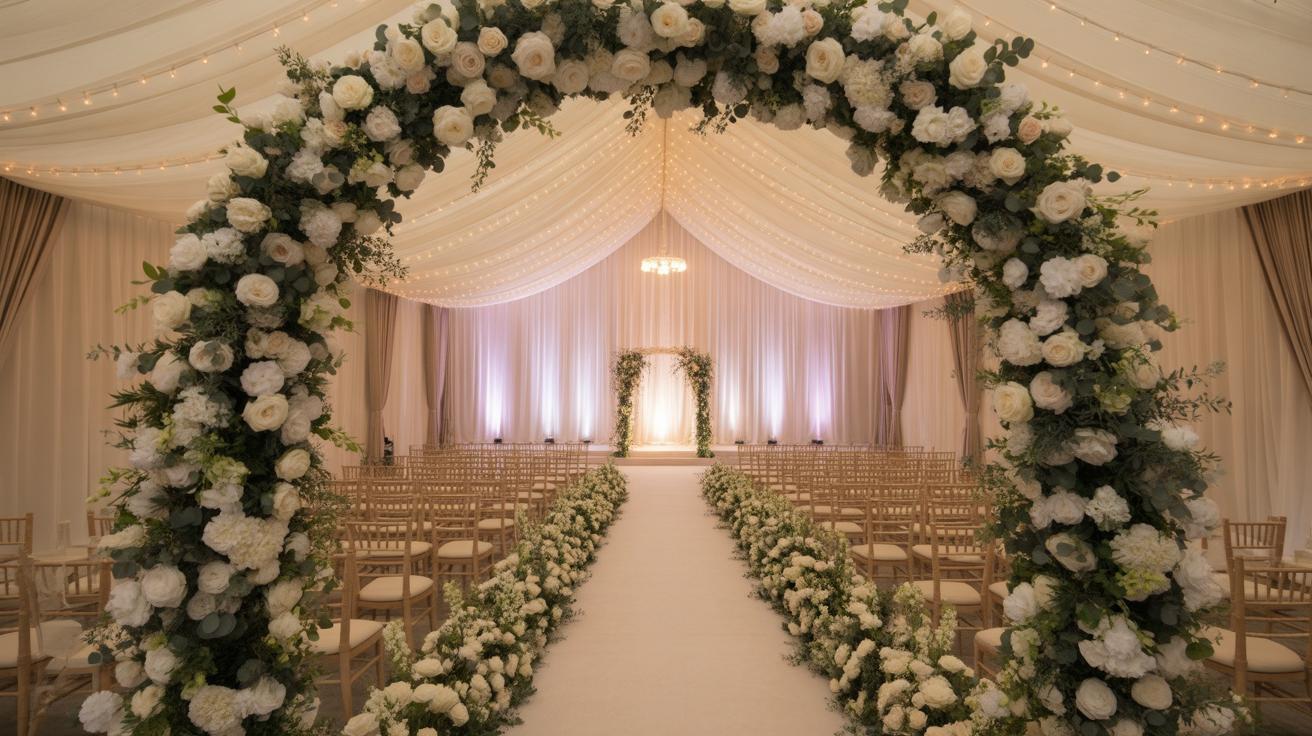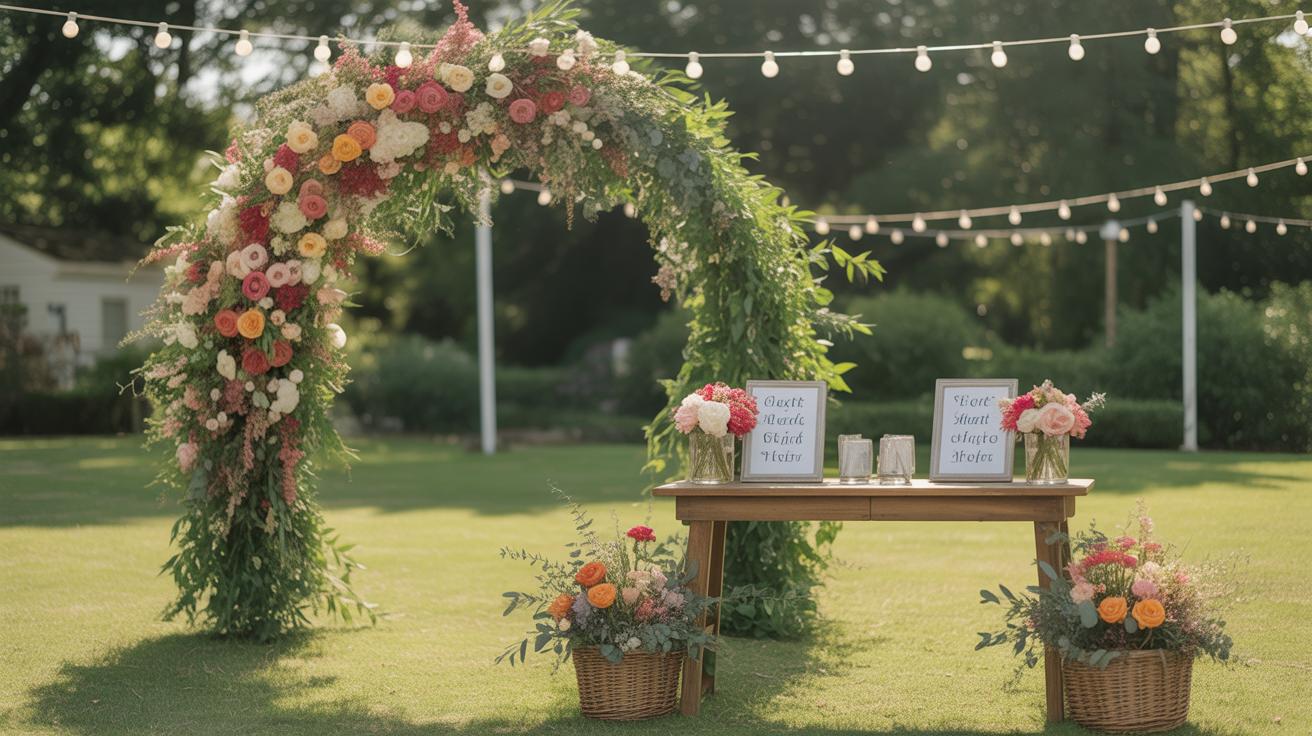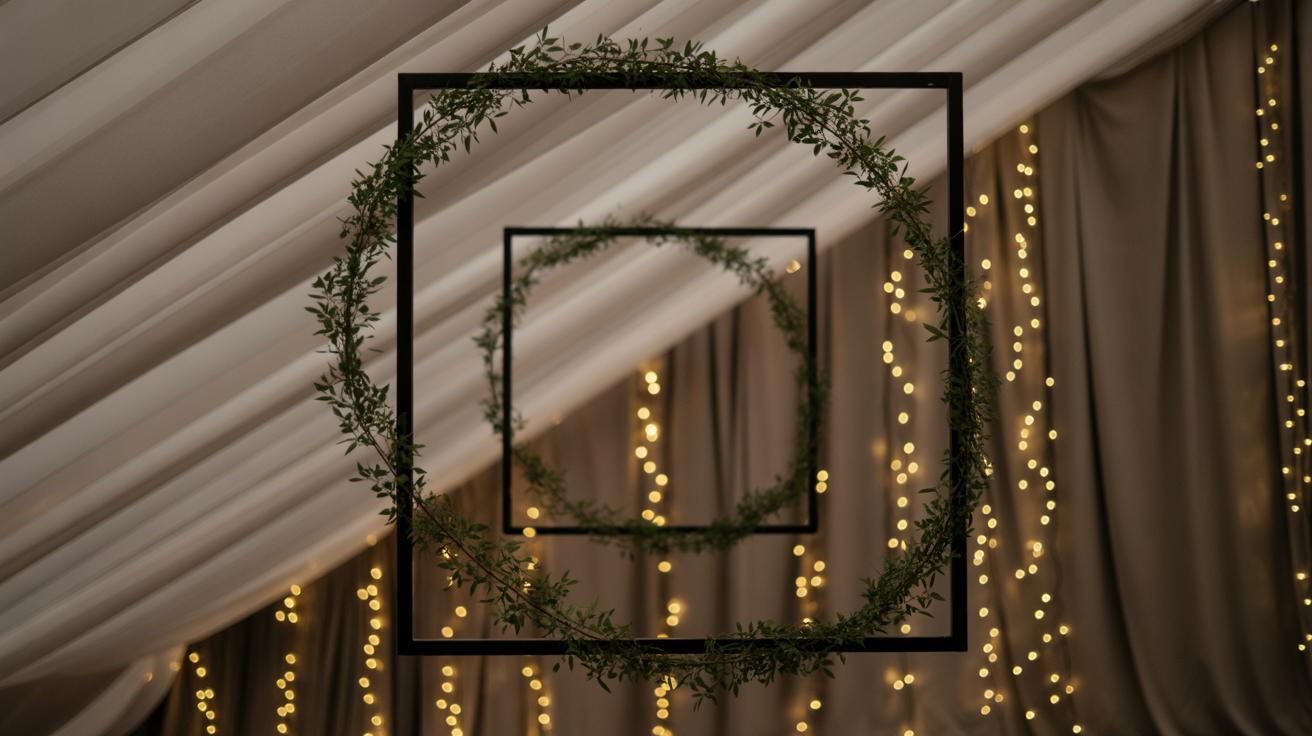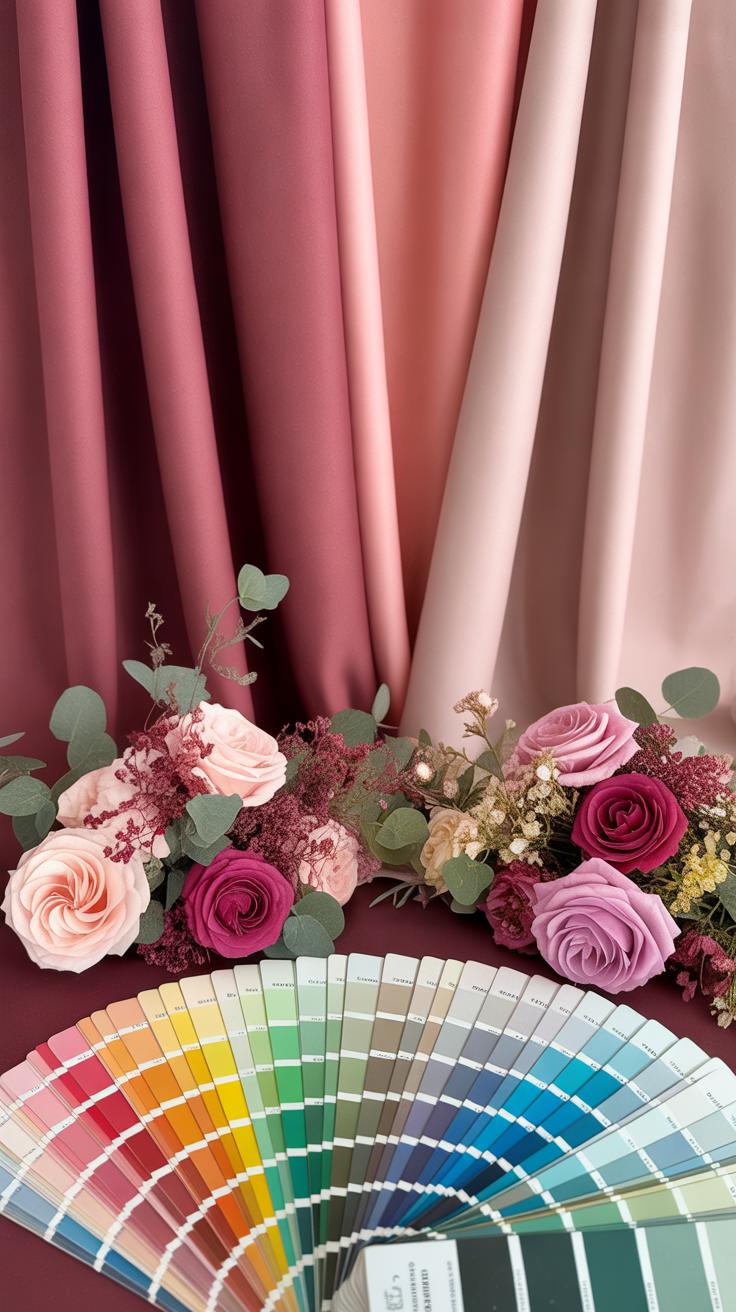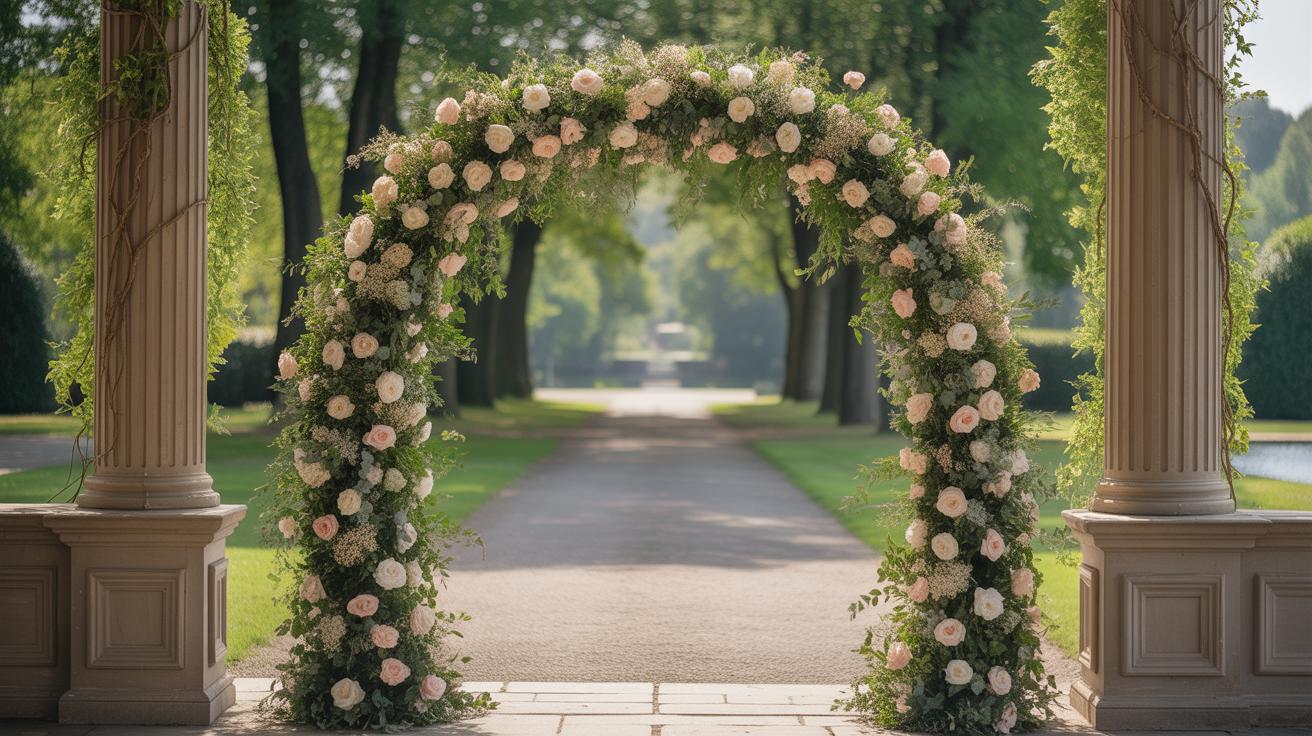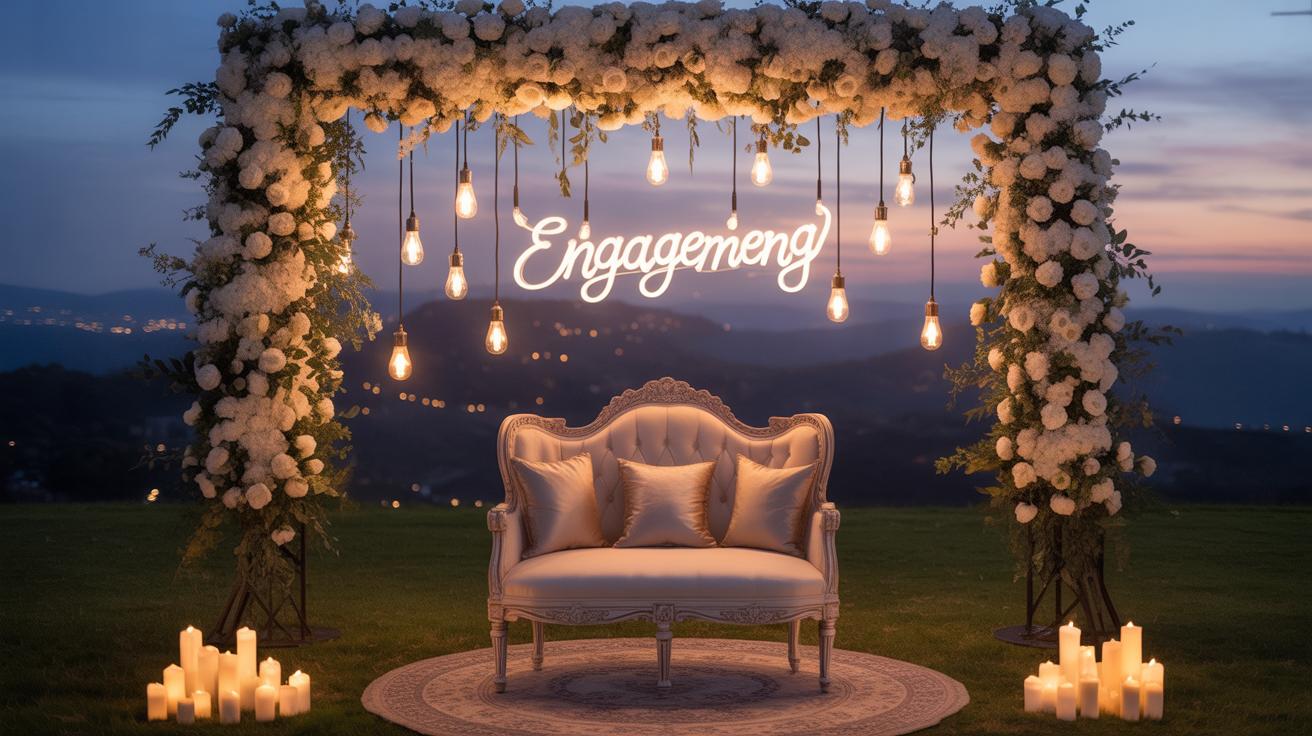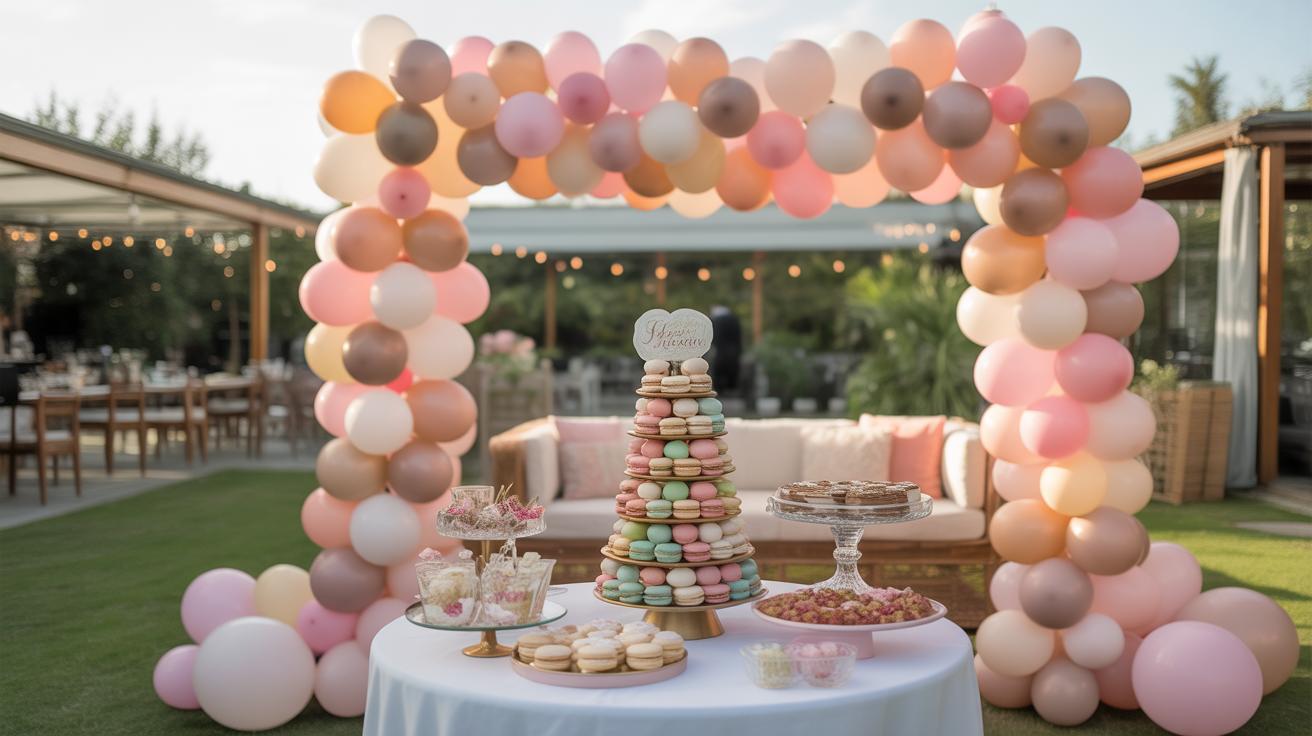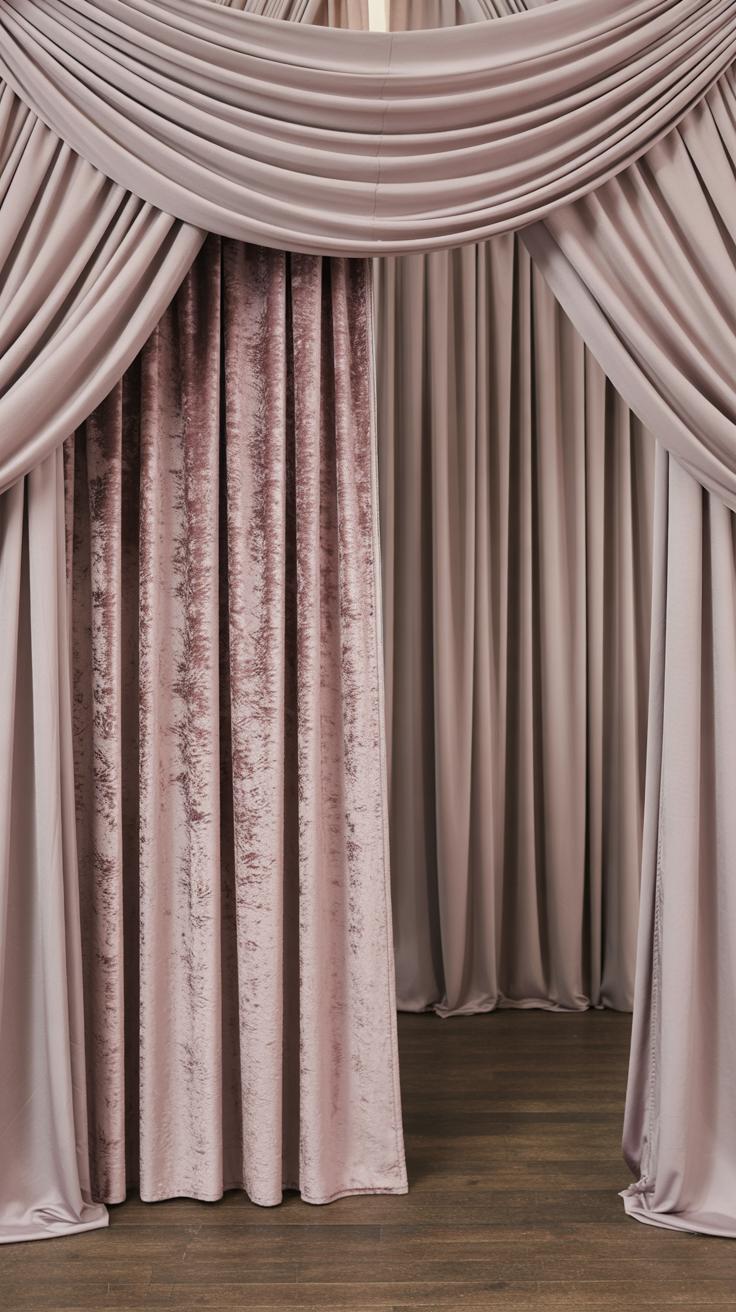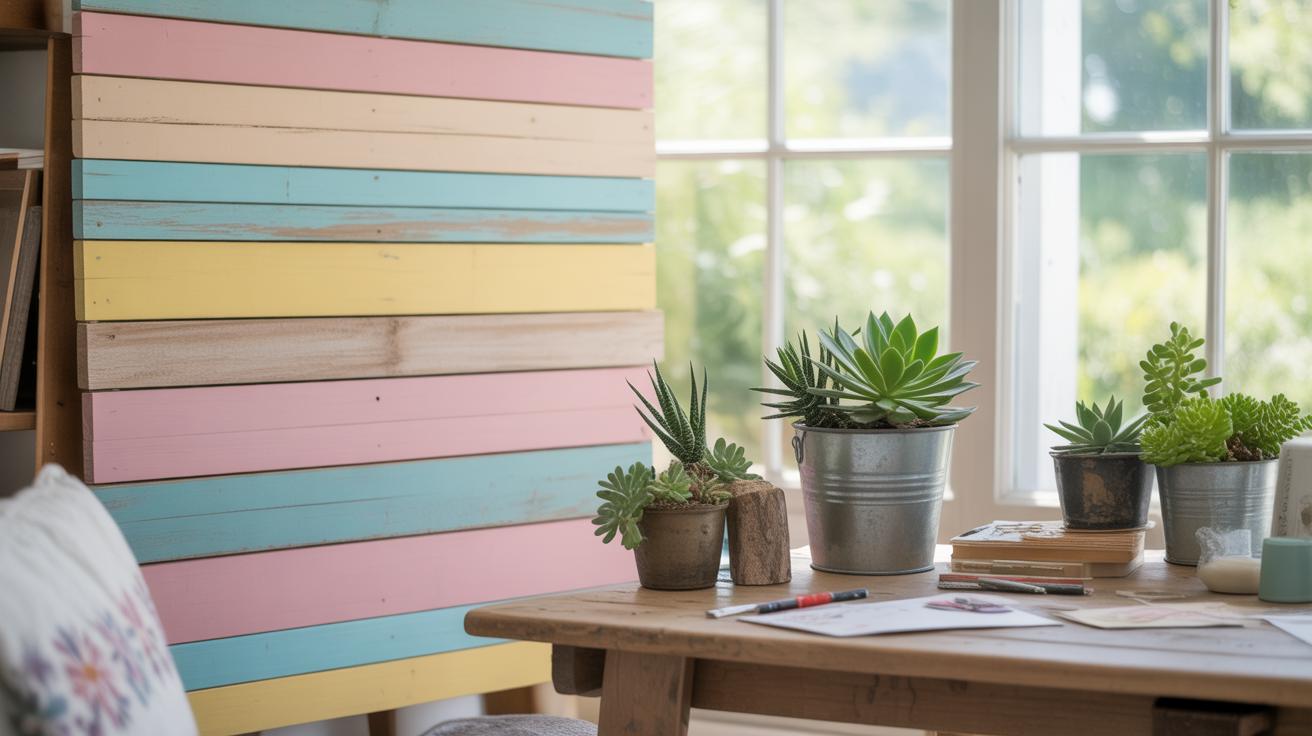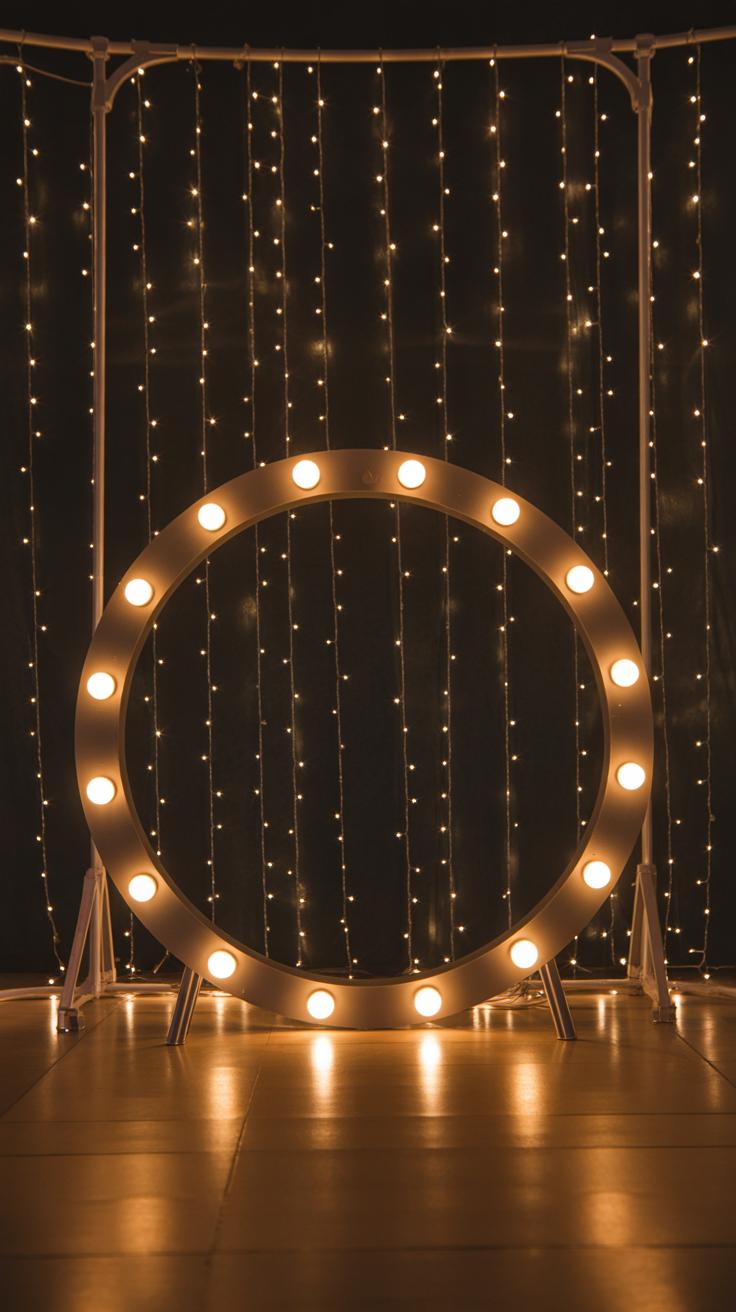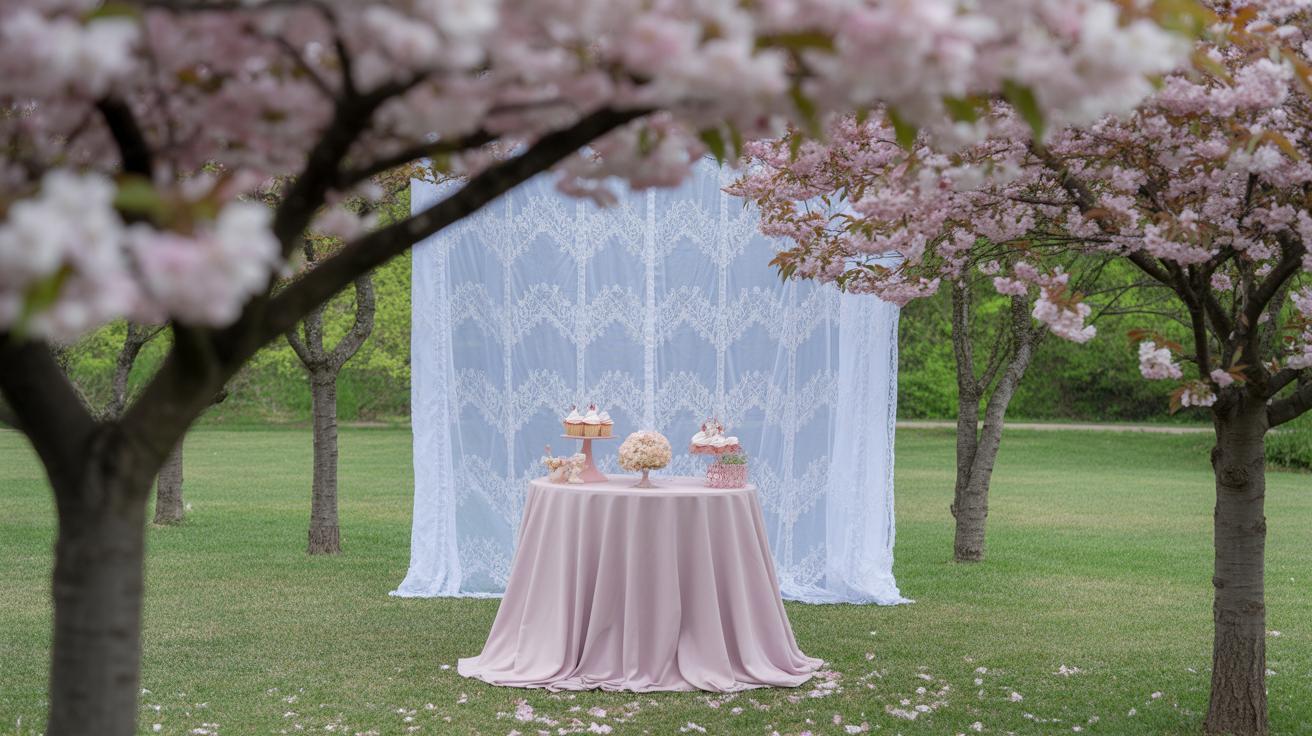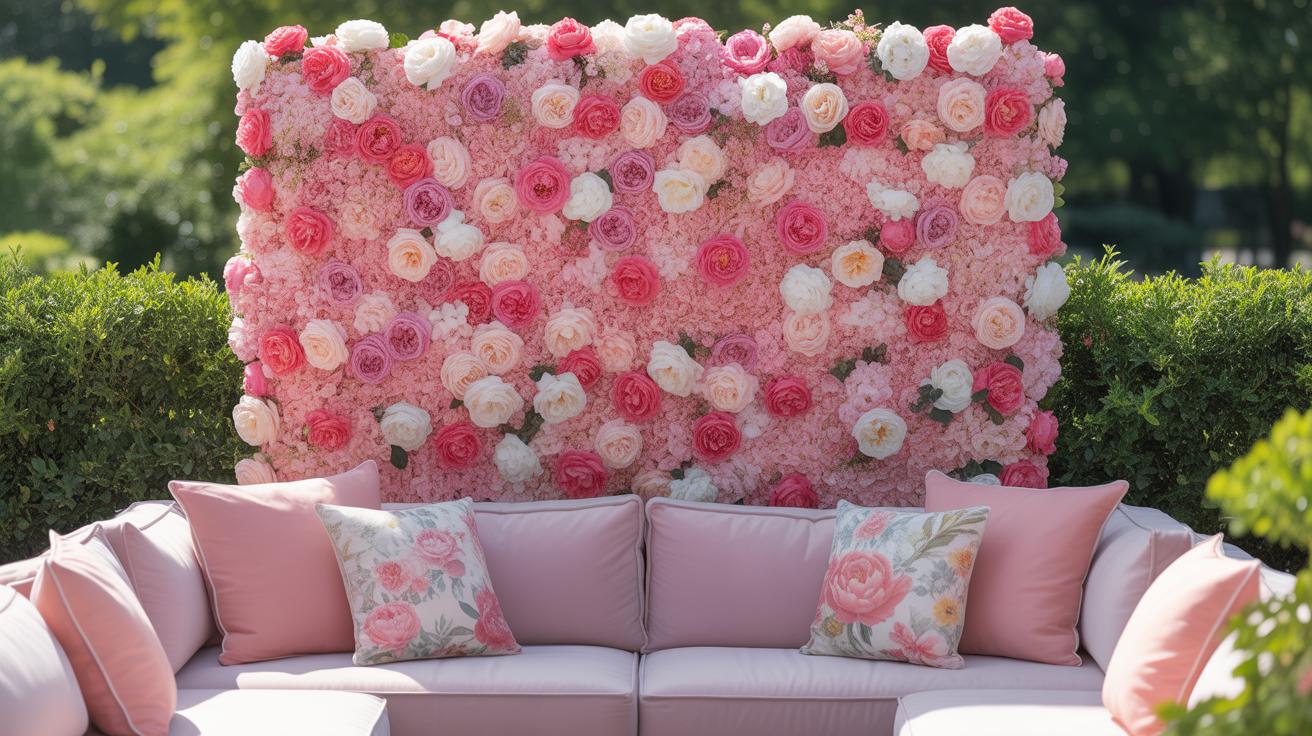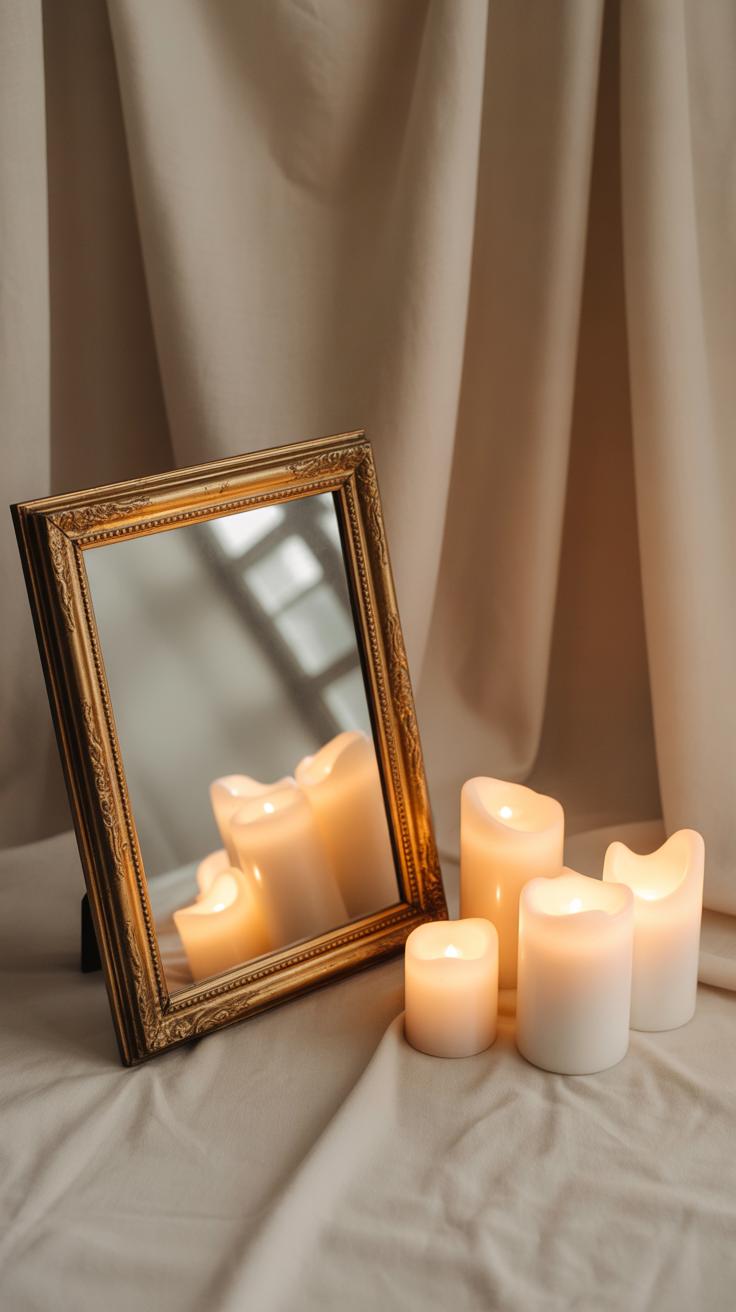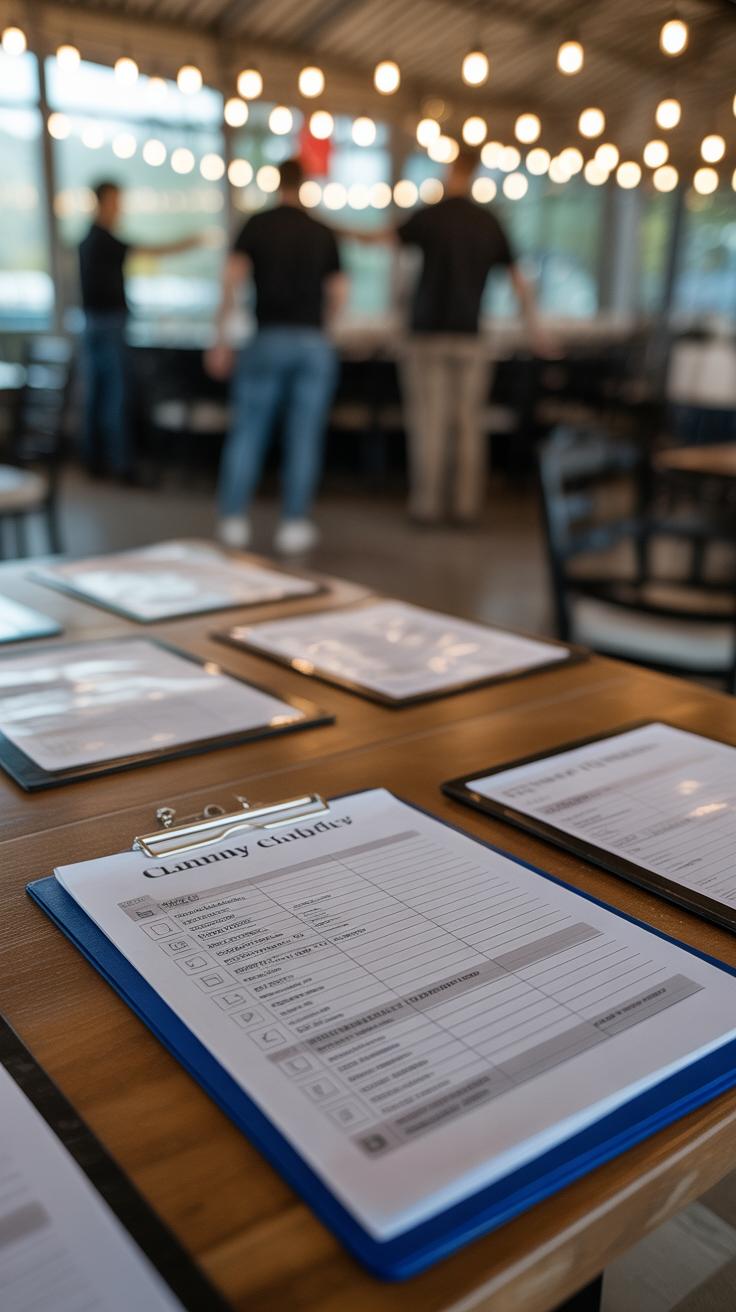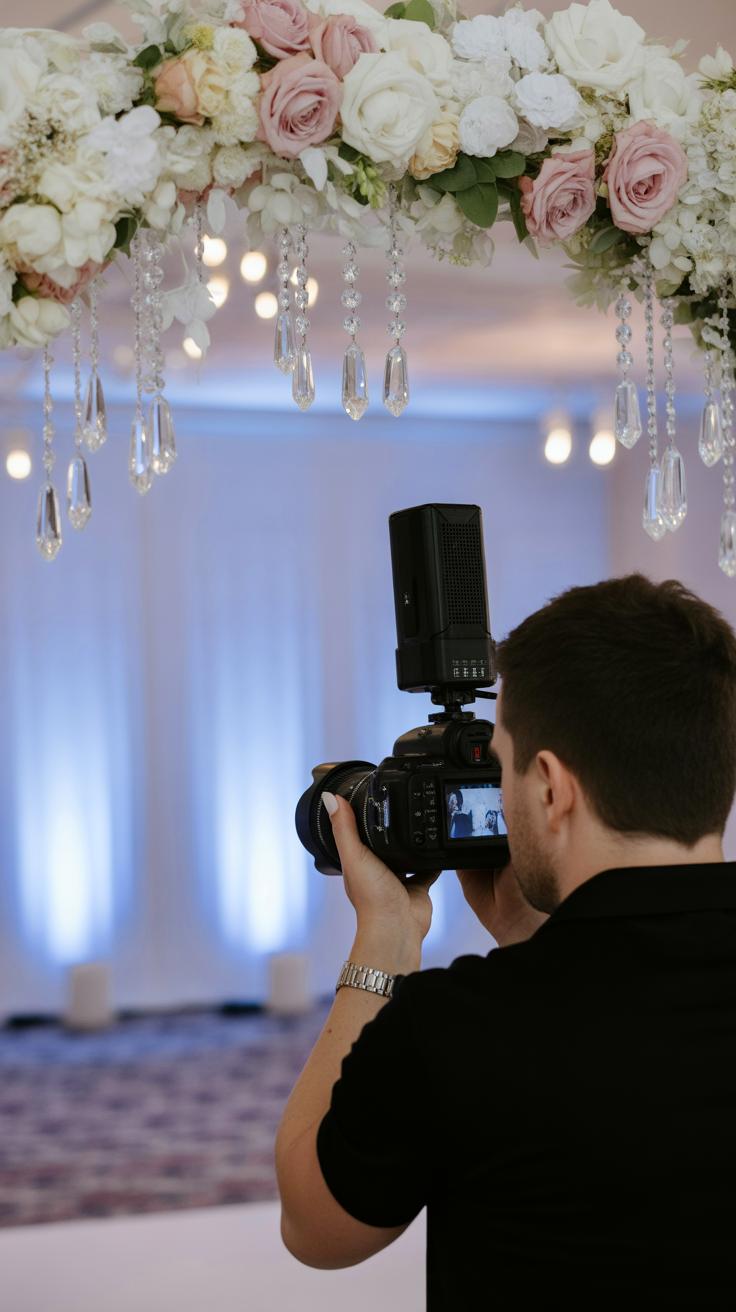Introduction
Wedding stage decorations set the scene for the important moments of your big day. They provide a backdrop where memories are made and photos are taken. Elegant wedding stage decorations can transform any venue into a stunning space that tells your unique love story.
This article will explore how you can create a fairytale moment with your wedding stage decorations. From choosing colors and themes to adding personal details, you will learn practical ways to design a stage that truly celebrates your love.
Setting the Foundation with a Theme
Choosing a theme for your wedding stage decorations does more than just give things a pretty look; it sets the entire tone for the space where you’ll create those unforgettable moments. The theme acts as a blueprint. It helps guide decisions about what materials to use, which props fit, and how the lighting should bounce off the backdrop. Without it, the stage risks feeling like a patchwork of ideas rather than a cohesive story—something you don’t want in a place designed to capture love and celebration.
Thinking about themes often makes people wonder how specific they should get. Should it be broad, like “rustic,” or precise, like “English garden with wildflowers”? Either approach works, as long as it gives you a direction. Your choice will influence details big and small—from the types of flowers to the furniture style and even the way drapes flow.
Popular Wedding Themes to Consider
There’s a wide range of themes you might consider, each shaping the stage decorations in its own way. Some ideas you could mull over include:
- Classic Elegance: Think grand chandeliers, rich fabrics, and refined floral arrangements. This lends a timeless, polished vibe to the stage.
- Bohemian Chic: Loose florals, earthy tones, and macramé backdrops add a relaxed yet artistic feel.
- Rustic Country: Wood textures, burlap, and wild greenery create a grounded, cozy atmosphere.
- Modern Minimalist: Clean lines, geometric shapes, and subtle color pops—this theme tends to emphasize simplicity and space.
- Fairytale Fantasy: Lots of soft tulle, twinkling lights, and ornate details make the stage look like something out of a storybook.
Each theme nudges your decoration choices to fit certain materials, colors, and setups. For example, a rustic theme leans more on natural wood and subdued colors, while fairytale demands sparkle and softness. You might start off liking one idea but then realize your venue or preferences pull you in another direction.
How to Match Your Theme with Your Venue
The setting of your venue can’t be ignored when deciding your theme—or your stage decor. A heavy, ornate theme might clash with a simple garden space just as a minimalist theme could feel out of place in a grand ballroom. Look around and consider what elements your venue already offers. For example:
- If your venue has exposed brick walls and big wooden beams, rustic or industrial themes could feel like a natural fit.
- Elegant ballrooms with chandeliers might call for classic or fairytale themes.
- Outdoor or garden venues lend themselves well to bohemian or natural themes.
Sometimes, adapting your theme to the venue brings its own questions. Are you imposing a style or letting the space speak? Balancing those elements doesn’t have one clear answer, but when you think carefully about how your theme and venue play off each other, your stage will feel much more intentional—and less forced. You want your decorations to look like they belong there, not stuck on like an afterthought.
Choosing the Perfect Color Palette
The colors you pick for your wedding stage can shape the entire atmosphere. They work like silent storytellers, hinting at your theme and season without saying a word. When selecting a palette, you want the colors to feel like a natural extension of your wedding—nothing that jars or feels out of place.
Think about the season first. Soft pastels suit spring’s freshness, while deeper, richer tones make more sense for autumn. But sometimes, that safe approach feels too predictable. Maybe you want to mix a classic cream with an unexpected burnt orange for a fall wedding. That little twist can be surprising, yet still fitting.
Classic vs Trendy Color Combinations
Classic combos often feel timeless—blush and gold, navy and white, or cream with sage. They have this quiet elegance that rarely shocks and usually pleases most guests. On the flip side, trendy palettes tend to bring in bolder or more unconventional choices like millennial pink or jewel tones. While trendy colors can make your stage stand out, they risk feeling dated a few years down the line.
I remember attending a wedding where the chosen teal and coral looked striking and modern at the time, but I can’t stop wondering how it will appear in photos decades from now. That’s a little gamble to consider.
Using Colors to Set the Mood
Colors are powerful mood-setters. Warm colors—reds, oranges—can make the space feel intimate and cozy, but they might also feel intense or overwhelming if overdone. Cooler shades like blue or lavender create calmness, but could risk making the stage feel distant or too serene. Neutral tones often strike a balance, but occasionally they may lack excitement.
Think about the specific feeling you want to evoke on the day. Do you want the stage to feel inviting and warm, or chic and sophisticated? Sometimes mixing moods can work, too—a mostly soft color base punctuated by a single bold accent. That kind of layering adds dimension without overwhelming the senses.
Selecting Key Decorative Elements
When it comes to setting up your wedding stage, the details can make a huge difference. You’ll want to think carefully about the main decorative pieces, because they set the mood for the entire event. Flowers, fabrics, lighting, and props each play a role, but mixing them thoughtfully is where the magic happens.
Flowers often catch the eye first. They’re not just about color, but texture and size too. Think about how big bouquets or small clusters might frame the couple’s space. Then, fabrics—these don’t just fill gaps. Drapes or even ribbons can add softness or drama depending on how you use them. Lighting isn’t just function; it sculpts the scene. From spotlights to fairy lights, the right choice can make everything glow in just the right way. And props—maybe vintage chairs, arches, or meaningful objects—can personalize your setting, making it more than just a pretty background.
Choosing these elements is a bit like balancing acts. Sometimes you want bold statement flowers but simpler lighting. Other times, a subtle floral presence lets the lighting steal the show. Think about what feels most you.
The Importance of Floral Arrangements
Picking flowers for your stage needs more than just matching your color palette. You have to consider the style of your wedding too. Are you going for a classic look or something more rustic? Flowers like roses or peonies work beautifully for a traditional vibe, while wildflowers might suit an outdoor or boho setting better. It’s worth thinking about seasonality here too—what’s fresh and available during your wedding month can really sway your options.
Texture plays a role as much as color. Some weddings benefit from lush, full blooms while others lean towards something lighter and more delicate. Also, don’t be afraid to mix in greenery—it adds depth and breaks the monotony of color. One thing I noticed at a recent wedding was how a simple eucalyptus garland transformed a basic stage into something almost magical, without overwhelming the space. That subtle tweak made me wonder why more décor doesn’t take advantage of such natural fillers.
Lighting Techniques for a Stunning Look
Lighting can completely change how your wedding stage feels, and it deserves careful thought. You might consider warm, soft lights for an intimate atmosphere. Candles or lanterns work well, and can even double as decorative elements. On the other hand, a combination of spotlights and fairy lights can brighten important moments and add sparkle.
Think about layering your lighting in different directions. Uplighting can highlight drapes or flowers from below, while overhead lights keep everything visible. Dimmer switches give you control to shift the mood throughout the event. One detail often missed is how light interacts with reflective surfaces—mirrors or metallic props can throw light around in unexpected ways.
Don’t underestimate the power of shadows too. Sometimes, softer, more diffused lighting creates a dreamy effect that harsh lights just can’t replicate. Deciding on your setup might seem tricky, but playing with a few options ahead of time can help figure out what clicks.
Using Fabrics and Drapes Effectively
Choosing Fabric Types for Your Stage
When selecting fabrics for your wedding stage, think about texture and weight as much as color. Sheer materials like chiffon or organza bring a light, airy feel, perfect if you want something delicate that floats softly in the air. On the other hand, heavier fabrics such as velvet or satin create a richer, more dramatic backdrop but can feel a bit overwhelming if overused. I once saw a stage where silk was combined with lace panels—it created an intriguing contrast that felt both elegant and interesting.
Consider the setting, too. Outdoor ceremonies benefit from fabrics that won’t wrinkle easily or show dirt, while indoor venues allow more freedom. Mixing matte with glossy finishes offers depth that flat surfaces miss. It’s not just about what looks good alone, but how fabrics catch light and shadow during your ceremony. Have you thought about how subtle reflections might change the mood?
Creative Draping Ideas
Draping doesn’t have to mean simply hanging fabric straight down. Wrapped around an arch, gathered in soft clusters, or cascading asymmetrically, drapes can shape the space around your celebration in surprising ways. Try layering fabrics of different transparency—placing a sheer layer over a solid one can soften harsh lines and add dimension without extra accessories.
Another idea is to experiment with height variations: drape fabric tightly across the top, then let it fall freely to the floor, creating movement that draws the eye upward and then down again. Using fabric to frame the couple, like a curtain pulled back just enough, creates a sense of intimacy and focus. Sometimes less draping gives more room to breathe, and sometimes, a bolder cascade feels just right. There’s really no perfect formula here—just what feels fitting for your stage and story.
Incorporating Lighting to Enhance the Stage
Lighting can completely change how your wedding stage feels — it’s not just about visibility. You want to create a mood, highlight key decorations, perhaps even guide your guests’ eyes in subtle ways. There’s something about well-placed lighting that can make a setting feel intimate, grand, or magical. Or sometimes a bit of all three.
Types of Lighting to Consider
There are several options you might want to think about for your stage:
- Fairy lights can give a delicate glow. Draped over fabrics or entwined with flowers, they add softness without overpowering.
- Spotlights help focus attention on you or a particular decoration, like a floral arch. But too harsh, and they risk washing out natural colors.
- Uplighting — placing lights at floor level to shine upward — adds depth to backdrops. It can make drapes or walls pop, especially in richer colors.
Each type has its strengths, and mixing them carefully can avoid a stage that’s too bright or oddly shadowed.
Tips for Lighting Placement and Control
Where you put your lights matters more than you might think. For example, uplights positioned too close can create sharp reflections; set them slightly farther back, and they wash the fabric in a more flattering way.
Spotlights work best when aimed just above eye level — this prevents harsh shadows on faces but still brings focus. Fairy lights? They look best when layered among textured décor, not just hung stiffly.
Controlling the lighting during the event is tricky but doable. You may want brighter light for vows, then dim it for speeches or performances. Using a simple dimmer or having a technician on hand to adjust levels quietly can make all the difference.
Think about how the light changes throughout the day, too. Natural light may shift, so you’ll probably adjust your stage lights accordingly. It’s a bit of trial and error, but that’s where small rehearsals help; you get a sense of what’s working or not.
Adding Personal Touches to Your Stage
Bringing personal elements to your wedding stage gives it a distinct character that no rental prop or generic design can match. When you add items that resonate with you as a couple, the space instantly feels more authentic and memorable. It’s not just a pretty background; it becomes a reflection of your journey together.
Think about integrating monograms or initials. These can appear in subtle ways, like embroidered cushions, etched glass panels, or even neon signs with your initials softly glowing behind you. Sometimes, these details blend so naturally with the décor that guests notice them only when they get up close. Other times, they become the centerpiece, making the stage unmistakably yours.
Another way to personalize is by showcasing photos or keepsakes. Imagine a delicate string of fairy lights holding snapshots from your first date, travels, or special moments with family. Framed mementos—like ticket stubs, love letters, or small heirlooms—can sit thoughtfully on a side table or be incorporated into floral arrangements. This sparks conversation and invites guests to glimpse into your shared story, making the event feel intimate rather than distant.
Have you ever seen how a single item can change the mood? Even small, meaningful touches bring layers of emotion and connection that no light or floral arrangement alone can achieve.
Balancing Budget and Style
When planning your wedding stage decorations, finding a balance between elegance and cost can feel tricky. You want the setting to look stunning without emptying your wallet. The key lies in choosing carefully where to spend and where to cut back.
Start by pinpointing the features that will make the biggest visual impact—like a backdrop or lighting. These elements often set the tone and can transform the entire stage. Then, look at smaller details like table runners, candles, or floral accents. These can be simpler or even DIY, saving you some money while still adding charm.
Speaking of DIY, crafting some decorations yourself can add that special touch and cut costs. Things like paper lanterns, homemade flower garlands, or simple fabric drapes can be surprisingly elegant if done thoughtfully. Just a bit of patience and a few materials can go a long way.
It’s worth asking yourself: which aspects will guests notice most? Maybe a lavish floral arrangement is worth the splurge, but simpler seating decor can still feel warm and inviting without being fancy. It’s a bit like a balancing act where not everything has to shout “luxury” to feel special.
Coordinating with Vendors and Venue Staff
Planning Installation and Setup
You want the decoration setup to feel almost invisible in its smoothness, but that rarely happens without some detailed coordination. Start by setting clear times for each vendor to arrive, load in, and install. Sometimes the venue will have restrictions on when this can happen, or space might be tight with other events going on, which means you can’t just wing it.
Talk through the whole timeline with everyone involved—florists, lighting pros, decorators—and be prepared for last-minute shifts or delays you didn’t anticipate. Maybe the delivery truck gets stuck or the venue staff needs access at a specific hour. Flexibility helps, but so does a shared understanding of the schedule. Even simple checklists or brief walk-through meetings the day before can clear a lot of confusion.
Ensuring Stage Safety and Comfort
Safety on the stage isn’t just about avoiding falls, though that’s a big part of it. Think about wiring for lighting, where furniture or props sit, and how stable everything feels—especially with friends and family gathering around. I’ve seen couples have to awkwardly keep shifting their position because the stage floor felt too cramped or wobbly. Not ideal.
Ask your vendors to do a thorough safety check once everything is in place. That means checking that heavy decor is secured and cords aren’t tripping hazards. Also, consider how comfortable the seating is—too stiff or narrow, and the couple will notice it during long ceremonies. Small cushions, firm chairs, or just enough space to move can make a subtle but real difference in how relaxed everyone feels.
Clear, ongoing communication with venue staff about any stage-specific rules or quirks can save you from unwanted surprises on your big day. Are you permitted to hang things from the ceiling beams? Is there easy access to power outlets or water if needed? These details can affect your stage design and, frankly, your nerves.
Capturing the Moment with Your Decor
Your wedding stage sets the tone not just for the ceremony but for the photos you’ll cherish forever. A thoughtfully decorated stage can transform snapshots from ordinary to memorable, giving each picture depth and emotion. I’ve noticed that when the backdrop has layers—textures, lighting, and colors that complement the couple’s outfits—the photos somehow feel warmer, more alive.
To make your stage photo-friendly, consider these points:
- Use soft, diffused lighting rather than harsh spotlighting; it reduces shadows on faces and keeps everything looking natural.
- Incorporate elements with different heights and shapes—this avoids flat images and creates visual interest in photos.
- Choose colors that contrast gently with your attire, so you stand out but still blend harmoniously with the background.
But it’s not just about looking good in pictures. Your decorations set the mood of the room. A well-designed stage can make guests feel closer, somehow more part of the moment. I’ve often wondered how subtle choices—like an inviting floral arrangement or a comfy seating arrangement—can encourage guests to approach and interact, rather than just watch from a distance.
To invite your guests to engage:
- Design the stage with accessible elements—low steps, open space, areas for mingling rather than barriers.
- Consider interactive decor like message boards, framed quotes, or personalized signs that spark conversations.
- Think about lighting that changes subtly during the event to highlight different moments and keep guests curious.
Sometimes, it’s less about a polished look and more about creating a space that feels alive and welcoming. A few well-placed details can invite guests to linger, smile, and be part of your story.
Conclusions
Choosing the right wedding stage decorations takes careful thought but also offers a fantastic opportunity to showcase your love story. By focusing on simple, elegant designs and meaningful details, you can create a setting that feels special and authentic to you.
Remember that your stage is the focal point of the ceremony, so investing time in planning will pay off. With the tips and ideas shared, you can achieve a beautiful, fairytale moment for your wedding day that you and your guests will treasure.

